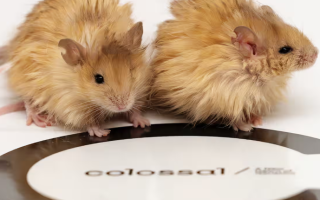
Researchers have stated that the mammoth reincarnation project is moving in the right direction after creating a new breed of hybrid organisms - the Siberian mouse. The US biotechnology company Colossal Biosciences plans to bring back ancient woolly mammoths by modifying the genetics of Asian elephants to give them characteristics of woolly mammoths.
Multiple experiments have not led to the appearance of the hybrid mice, but among the birthed mice were different groups of unique types of woolly hair, including plush palts, long hairs, and golden-brown palts. All this does not close the study to understanding whether they can eventually provide the elephant with useful traits similar to mammoths, and we only know the known aspects of biology.
Robin Lovell-Badge, head of the stem cell and genetic development department at the Francis Crick Institute in London, which did not participate in the study, highly rated the technical aspects of the work. However, he stated that resurrecting the extinct mammoth will be much more complicated than simply altering several genes to adapt to the cold, especially considering that it is not clear whether genetic modifications are necessary to ensure that the animals not only look like mammoths but behave like them as well.
Lovell-Badge noted that his overall concern lies in whether it is a reasonable use of resources instead of spending money on preventing species extinction, and he emphasized that another problem lies in the fact that currently there are no results on whether genetically modified mice can effectively survive in the cold. He stated that they have some colorful fur of the mice, but they do not understand their physiological functions or behaviors, etc.
Colossal's executive director and co-founder Ben Lamb expressed hope for the appearance of the first living creature by the end of 2028. Lamb stated that the team studied the genes of the ancient mammoth and compared them with the genes of Asian elephants to understand what their differences are, and has already begun editing the genome of the Asian elephant cells.
According to the newspaper The Guardian, the team announced that it received new support for its approach after creating genetically modified healthy mice with traits aimed at the transfer of cold, including fur.













